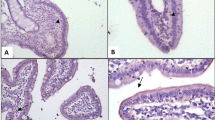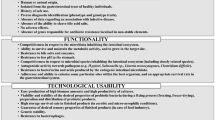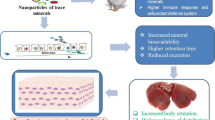Abstract
The effect is described of selenium supplemented in an inorganic and organic form on the innate immune response of goats. Though the phagocytic activity (as a marker of the immune function) was found to be lower in organic-Se-treated group than in control (54.5 ± 4.32 vs. 60.2 ± 9.15 %), it did not generally exhibit any significant differences; similarly, no differences were found in the phagocytic index. The production of reactive oxygen species (ROS) was determined using the luminol-enhanced chemiluminescence (CL) (estimated as peak CL, integral CL and a peak time after addition of calcium ionophore A23187, opsonised zymosan (OZP) and phorbol-12-myristate-13-acetate as effectors. A significant ROS increase reflected in integral CL and a peak time was found in the inorganic-Se-treated group when OZP was used as activator; other parameters did not exhibit significant changes. The supplementation of Se in inorganic form can thus be seen to influence positively the innate immune system of kids.
Similar content being viewed by others
Abbreviations
- Ca-I:
-
calcium ionophore A23187
- CL:
-
chemiluminescence
- GPx:
-
glutathione peroxidase
- OZP:
-
opsonized zymosan
- PBS:
-
phosphate-buffered saline
- PMA:
-
phorbol-12-myristate-13-acetate
- RLU:
-
relative light unit(s)
- ROS:
-
reactive oxygen species
- WBC:
-
white blood cells
References
Ahluwalia J., Tinker A., Clapp L.H., Duchen M.R., Abramov A.Y., Pope S., Nobles M., Segal A.W.: The large-conductance Ca2+-activated K+ channel is essential for innate immunity. Nature427, 853–858 (2004).
Arthur J.R., Mckenzie R.C., Beckett G.J.: Selenium in the immune system. J.Nutr.133, 1457–1459 (2003).
Benda V., Hospes J.: Phagocytic activity of leukocytes in sheep and goats. Acta Vet.Brno60, 149–152 (1991).
Berger M.M., Shenkin A., Revelly J.P., Roberts E., Cayeux M.C., Baines M., Chioléro R.L.: Copper, selenium, zinc, and thiamine balances during continuous venovenous hemodiafiltration in critically ill patients. Am.J.Clin.Nutr.80, 410–416 (2004).
Číž M., Pavelková M., Gallová L., Králová J., Kubala L., Lojek A.: The influence of wine polyphenols on reactive oxygen and nitrogen species production by murine macrophages RAW 264.7. Physiol.Res.57, 393–402 (2008).
Falhar J., Pavlata L., Pechová A., Dvořák R.: The effect of selenium on selected parameters of ruminal fluid and biomass in cattle and sheep (10th Middle European Buiatrics Congress, Košice 2009, Slovakia); Folia Vet. 53(Suppl. 2), 244 (2009).
Ferenčík M., Ebringer L.: Modulatory effects of selenium and zinc on the immune system. Folia Microbiol.48, 417–426 (2003).
Gupta U.C., Gupta S.C.: Quality of animal and human life as affected by selenium management of soils and crops. Commun. Soil Sci. Plan.33, 2537–2555 (2002).
Johnson V.J., Tsonuda M., Sharma R.P.: Increased production of proinflammatory cytokines by murine macrophages following oral exposure to sodium selenite but not to seleno-L-methionine. Arch.Environ.Con.Tox.39, 243–250 (2000).
Kirchgessner M., Gabler S., Windish W.: Homeostatic adjustments of selenium metabolism and tissue selenium to widely varying selenium supply in Se-75 labeled rats. J.Anim.Physiol.Anim.Nutr.78, 20–30 (1997).
Kovaru F., Kovaru H., Zelnickova P., Fiserova A.: Ontogeny of immune defense mechanisms in pig experimental model (Gordon Research Conferences, Oxford 2008); Immunochem.Immunobiol.35, 92–93 (2008).
Milad K., Racz O., Sipulova A., Bajova V., Kovac G.: Effect of vitamin E and selenium on blood glutathione peroxidase activity and some immunological parameters in sheep. Vet.Med.Czech.46, 1–5 (2001).
Musik I., Koziol-montewka M., Tos-luty S., Pasternak K., Latuszynska J., Tokarska M., Kielczykowska M.: Immunomodulatory effect of selenosemicarbazides and selenium inorganic compounds, distribution in organs after selenium supplementation. Biometals12, 369–374 (1999).
Pavlata L., Pechová A., Illek J.: Direct and indirect assessment of selenium status in cattle — a comparison. Acta Vet.Brno69, 281–287 (2000).
Pavlata L., Šlosárková S., Fleischer P., Pechová A.: Effects of increased iodine supply on the selenium status of kids. Vet.Med. Czech.50, 186–194 (2005).
Rampal S., Kumar R., Randhawa C.S., Sood N.: Maturation arrests of neutrophils — a possible reason for the leucopenia in sodium selenite induced sub-chronic selenosis in cow calves. Environ.Toxicol.Pharmacol.25, 39–42 (2008).
Řezanka T., Sigler K.: Biologically active compounds of semi-metals. Phytochemistry69, 585–606 (2008).
Segal A.W.: How neutrophils kill microbes. Ann.Rev.Immunol.23, 197–223 (2005).
Smith M.L., Lancia J.K., Mercer T.I., Ip C.: Selenium compounds regulate p53 by common and distinctive mechanisms. Anticancer Res.24, 1401–1408 (2004).
Vetvicka V., Fornusek I., Kopecek J., Kaminkova J., Kasparek I., Vranova M.: Phagocytosis of human leukocytes: a simple micromethod. Immunol.Lett.5, 97–100 (1982).
Windisch W., Gabler S., Kirchgessner M.: Effect of selenite, selenocysteine and selenomethionine on the selenium metabolism of Se-75 labeled rats. J.Anim.Physiol.Anim.Nutr.78, 67–74 (1998).
Windisch W.: Interaction of chemical species with biological regulation of the metabolism of essential trace elements. Anal.Bioanal. Chem.372, 421–425 (2002).
Author information
Authors and Affiliations
Corresponding author
Rights and permissions
About this article
Cite this article
Malá, S., Kovářů, F., Mišurová, Ľ. et al. Influence of selenium on innate immune response in kids. Folia Microbiol 54, 545–548 (2009). https://doi.org/10.1007/s12223-009-0079-5
Received:
Revised:
Published:
Issue Date:
DOI: https://doi.org/10.1007/s12223-009-0079-5




